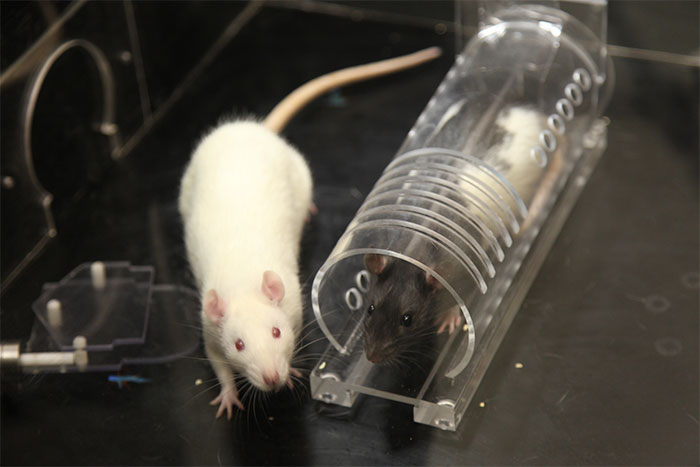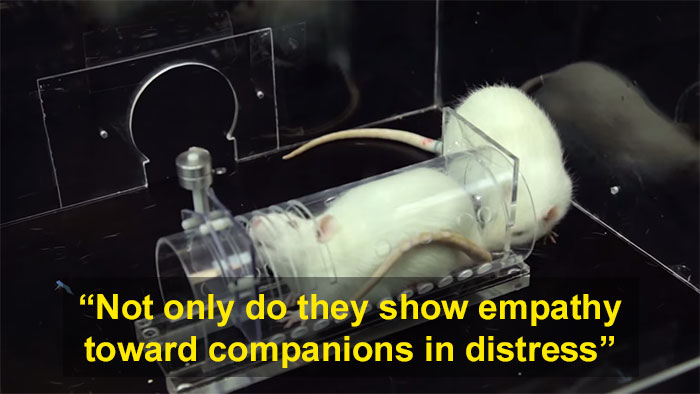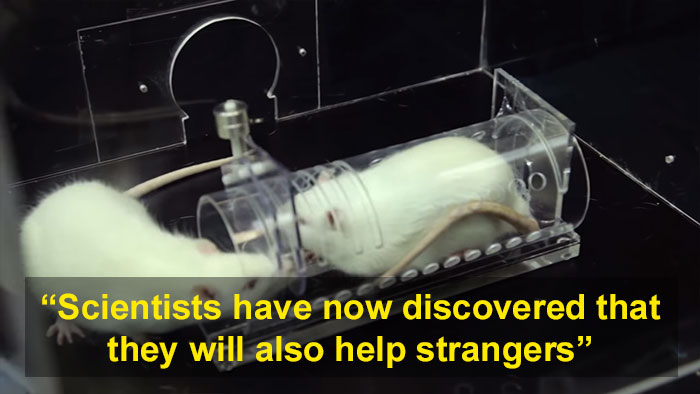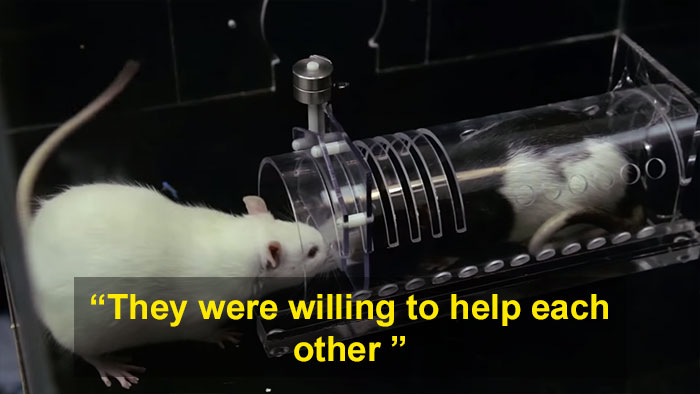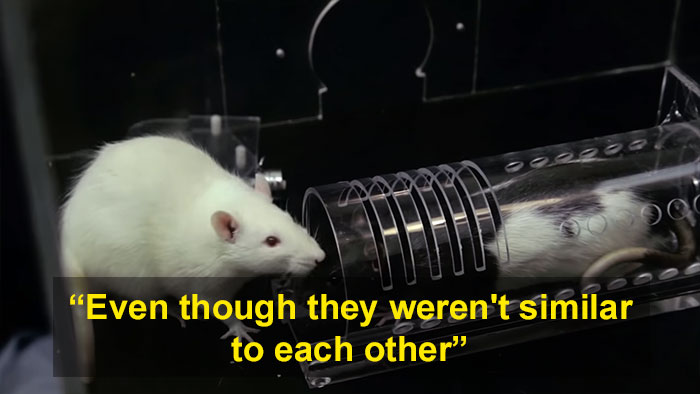We don’t expect humanity from rats.
And yet, it seems these furry little rodents are very social and have high levels of understanding.
In 2011, scientists Inbal Ben-Ami Bartal, Jean Decety, and Peggy Mason did an interesting experiment to see just how much rats are helpful with their fellow rodents.
The results were (to put it mildly) awesome. Rats helped in freed other rats who were in danger. Interestingly, when they had a choice between freeing a rat in trouble or opening up a container full of chocolate, they ‘liberated’ both smartly.
Scroll down for Bored Panda’s interview with Bartal to know about his experiment.
“Two relevant papers have come out for me since 2011. One in eLife shows that rats will help others of their ingroup (cagemates and strangers of the same strain) but not the outgroup (strangers of a black-furred strain they are not familiar with),” Bartal explained.
“So rats are selective in who they help. The encouraging thing is that we then found that cohabitation, living with a rat from the other strain for two weeks totally changes this behavior, and now rats will help that cagemate from the other strain. even more impressively, after living together for two weeks with one rat of the other strain, they will help strangers from the other strain as well.”
She continued: “Finally, rats were fostered at birth with rats from the other strain. Like Mowgli, they were raised with the other strain and never encountered their own kind.
When they grew up, they only helped rats of the adoptive strain, not the biological strain. So in sum, social experience is what determines to help, not the genetic similarity.”
“We also show in another paper that helping depends on the transfer of distress between the two rats.
Administration of a common anxiolytic (midazolam) reduces helping. Additionally, both rats show an increase in stress hormone corticosterone at the start of testing, but no stress response on the last day of testing for the pairs which learned how to open.
non-helpers still show a stress response even on the last day, suggesting they were unable to learn how to open rather than not motivated,” the scientist told Bored Panda. “After that, I spent five years looking into the neural circuits of this behavior, hoping to publish soon.
”
Bartal also said that she opened her very own laboratory at Tel-Aviv University and she is “Planning on continuing to study the brain’s way of processing distress in others, why we care about some and not others, and how the brain determines group membership. In rats first but hoping to look at humans as well.”
“I am really interested in empathy across species, myself have not worked with others but lots of new papers coming out on empathy and sensitivity to emotions of others, as well as pro-social choices in birds, dogs, horses, even fish.”
According to Bartal, the discussion on empathy in animals gets “stuck on semantic issues.”
“For instance, the definition of empathy, how can we say that animals really feel empathy the same way we do.
But empathy is a construct. We don’t even know what it is in humans really! I operate on the assumption that there is an evolutionary continuum between species, and that the basic building blocks of our responses are shared. Being sensitive to distress in others and motivated to care about their suffering is as old as the moment mother and child became connected for survival after birth.
”
Recommended Video
“Giant squid caught on camera for the first time in the US”
[rumble video_id=v585mb domain_id=u7nb2]




